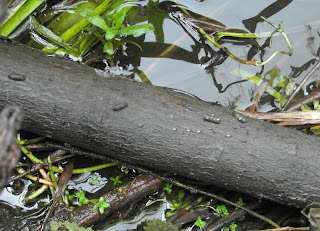Latrine
Prints
I'm getting fewer sightings now, even though it's not even September. Tempting to start worrying about the impact of the polecat, but really I think it's just the usual autumn dispersal as, firstly, this is a pattern I've observed over the last six years and secondly, I'm still counting lots of freshly-attended latrines. It's possible the adults who were so forward a couple of weeks ago, climbing on my boot and investigating my bag, have been predated as I've not seen any sign of them for a while. But there are plenty of youngsters still about, including a very small vole not long out of the nest - I'm guessing not much older than five or six week at the most. As you can see from photo 5, he's only about the size of a nettle leaf.




















